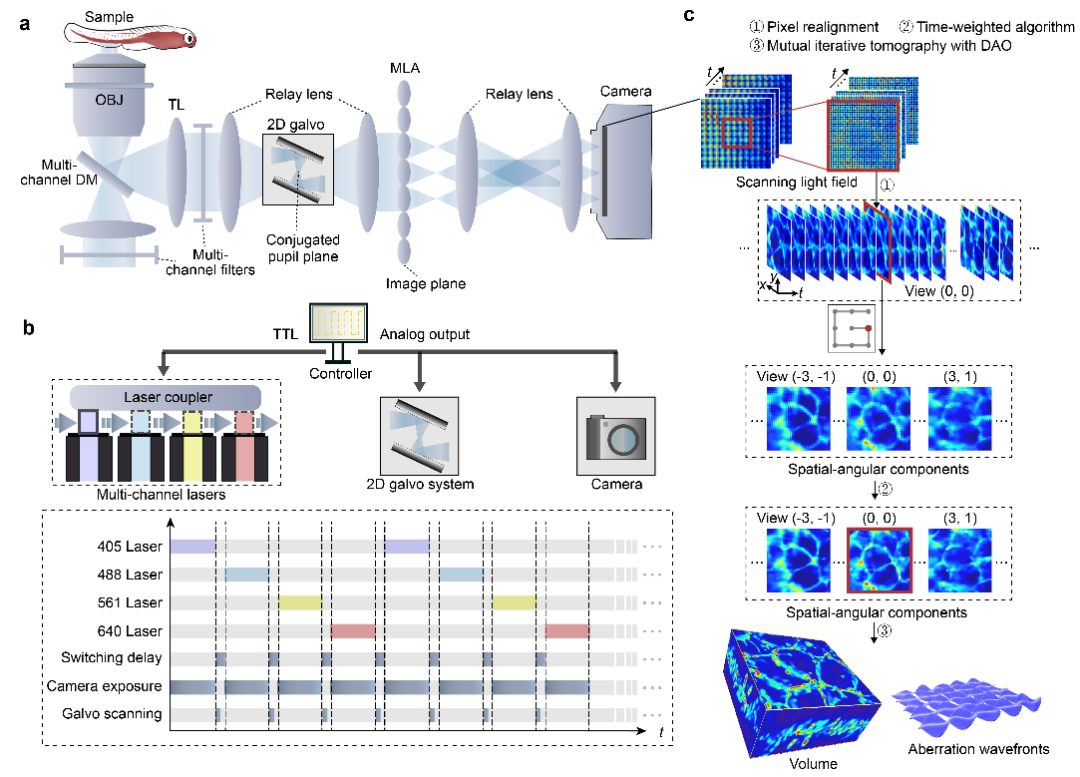Abstract
With the development of a wide variety of animal models in recent years, there is a rapidly growing demand for long-term, high-speed intravital fluorescence imaging to observe intercellular and intracellular interactions in their native states. Scanning light-field microscopy (sLFM) with digital adaptive optics provides a compact computational solution by imaging the entire volume in a tomographic way with orders-of-magnitude improvement in spatiotemporal resolution and reduction in phototoxicity, as compared to traditional intravital microscopy. Here, we present a step-by-step protocol for both hardware and software implementation of multicolor sLFM as an add-on to a normal wide-field fluorescence microscope by using off-the-shelf lenses and devices at low cost. The procedure can be easily applied to other LFM variants, which can be advantageous in certain experimental contexts. Owing to the strong reliance of sLFM on algorithmic post-processing for high-quality data, the protocol describes various kinds of artefacts and corresponding parameters used for correcting and performance optimization. To increase the tolerance to system misalignment and differences in device fabrication, we describe a one-step calibration method for robust imaging performance up to the diffraction limit. An open-source graphical user interface is presented for hardware synchronization and real-time rendering of multiview images. The whole procedure including optical setup, software installation, system calibration and 3D reconstruction can be executed in 3–4 d with basic knowledge in optics and electronics.

|
Paper Link:https://www.nature.com/articles/s41596-022-00703-9
|
